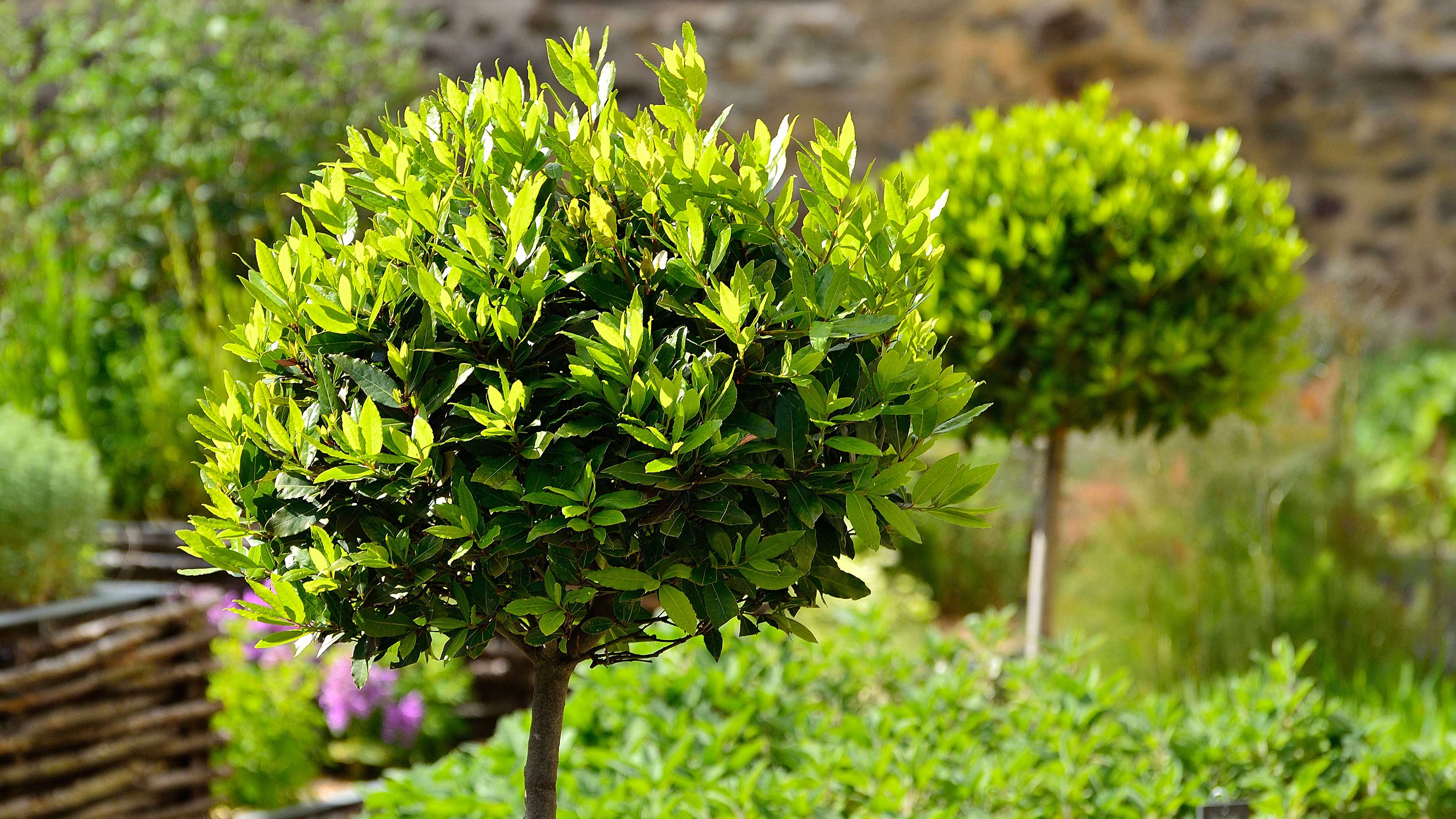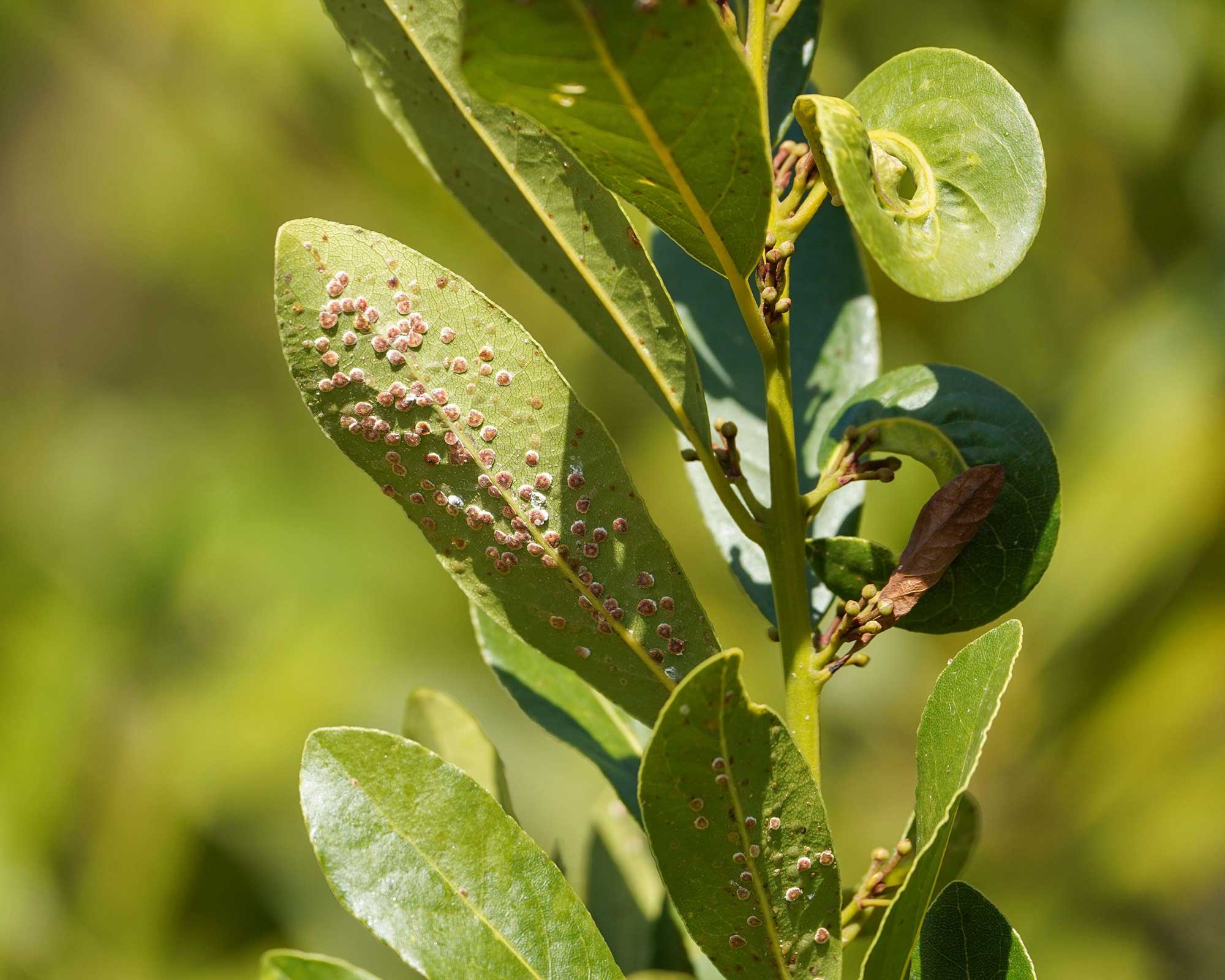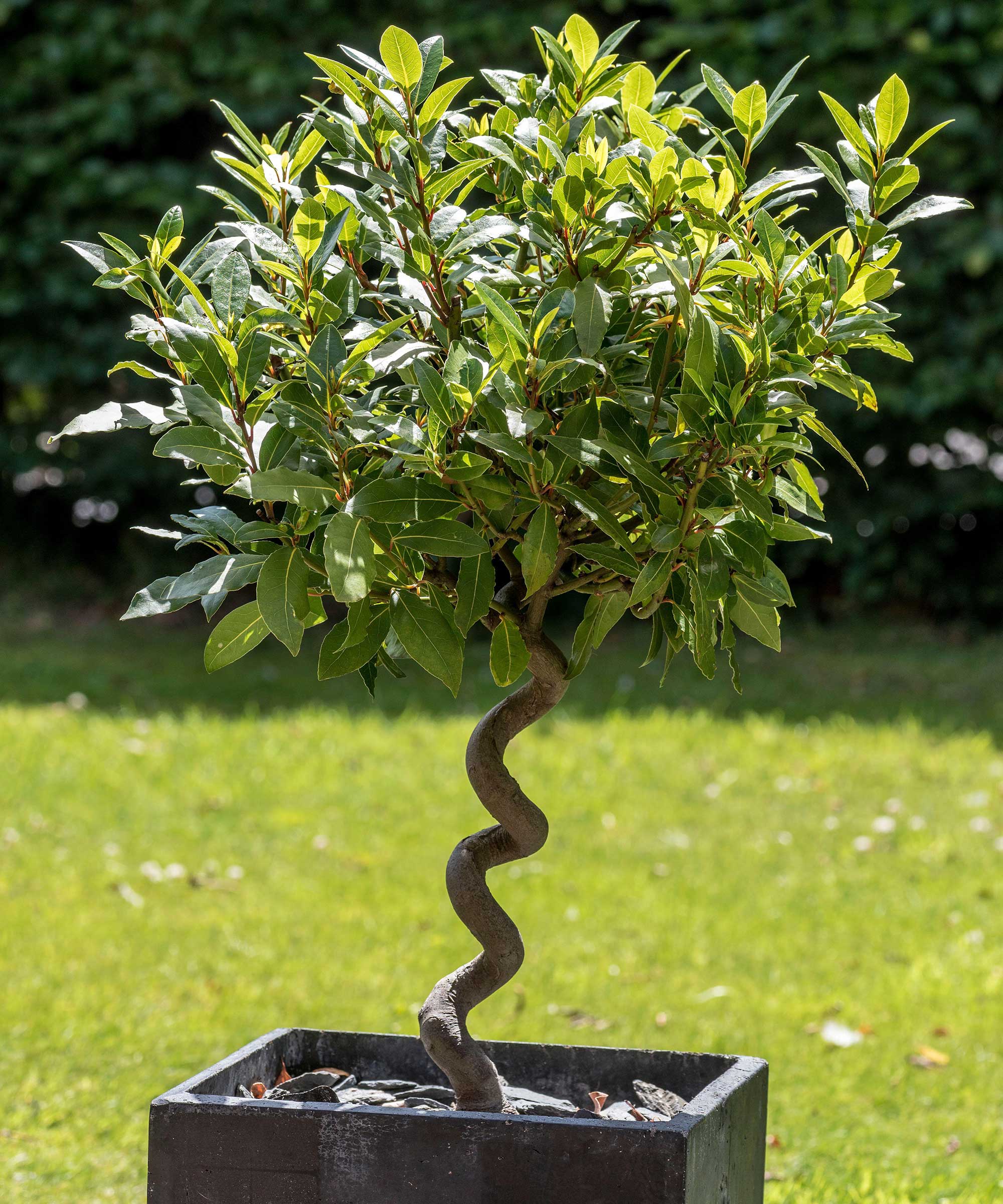Bay tree problems: 5 common issues and solutions
We explain how to avoid these common bay tree problems, from pests to planting errors


Although they are generally low-maintenance, there are a few common bay tree problems to get to grips with if you're planting one or two of these evergreens in your plot. If you've spotted yellowing leaves, odd markings, loss of vigor, or other unexpected symptoms on your tree, then you'll likely want to get to the cause.
Bay tree problems are generally not too complicated – their easy care regime is one of the reasons they make one of the best trees to grow in pots. But, like most plants, there are a few pests that can be a nuisance, or your bay tree may be kicking up a fuss due to environmental factors. Knowing what to look for is half the battle – it's always good to spot issues quickly so you can treat them before they get out of hand.
We've rounded up top advice on how to identify and treat common issues that occur with these structural, aromatic trees, so you can continue to enjoy them in your backyard.
5 bay tree problems and how to solve them
Whether planted in a pot or straight into the ground, bays are wonderful trees for small gardens and the leaves are valuable for using in the kitchen. This advice will help keep yours happy and healthy.
1. Scale insects
If you've spotted odd blemishes on the leaves of your bay tree, they have turned yellow and started to drop off, or have become coated in a sticky-like substance, scale insects may be the problem.
As John Negus, an expert from Amateur Gardening magazine explains, these are tiny, armadillo-shaped creatures that weaken the trees by feeding on sap while releasing a gluey, honeydew-like substance.
You can control them with an insecticide that's safe to use on edible crops, such as BugClear Fruit & Veg (available on Amazon). 'Based on rape seed oil, it clogs the pest's breathing pores, which kills it. It is recommended for several pests,' explains the Amateur Gardening team. Alternatively, John suggests spraying the tree with a mild solution of washing-up liquid and water.
Additionally, fertilizing the plants with sulfate of potash monthly from mid-spring to early fall is a good idea. 'Sprinkle it over the root area at 1oz (28g) per square meter and water it in,' directs the team.

2. Restricted roots
If you have planted your bay tree as part of your container gardening ideas and it's looking unhappy, it could be the size of the pot that's the problem.
'Your tree is probably distressed because its container is full of roots, so move the tree to a pot that is at least double the existing size,' advises the Amateur Gardening experts.
'Water the compost to loosen feeding roots clinging to the side of the pot and gently remove the rootball.'
Then, in the new pot, add a layer of crocks and nestle the roots into 3in (7cm) of soil-based compost mixed with a quarter part, by volume, of grit. Fill with more compost.
'Replant the bay at the same depth at which it is growing and water it well,' they continue. Mulching the top of the compost with slate or grit will help conserve moisture.

3. Bay suckers
Brown, curling leaves on a bay tree can be a sign of bay suckers – a minute pest resembling fluffy white stars that devours leaf undersides.
'When feeding, this creature causes the plant's leaves to develop thick, distorted bulges,' explains John Negus. 'Luckily, although this is unsightly, it doesn't do irrevocable damage to the bay.' However, severe infestations can cause leaves to drop prematurely, and shoots to die.
As for controlling it, the best approach is to pick off and bin or burn affected foliage. Clear away fallen leaves and other debris from the base of the plant, too.
You could also use a pesticide, although several applications may be necessary. Remember to use one that's safe for edible crops if using the leaves for cooking. Ideally, do this during warm sunny days in spring, when the adults cluster on the shoot tips to feed before laying their eggs.
'Alternatively, encourage natural predators such as birds, ladybirds, wasps, and ground beetles to frequent your garden,' says John – our wildlife garden ideas have plenty of ways to welcome in beneficial critters.

4. Leaf spot
Leaf spot is a fungal disease, which, John Negus explains, shows as necrotic gray or brown spots on the leaf.
'The best way to deal with it is through good hygiene and improved growing conditions,' he says.
Start by removing affected leaves and raking up any fallen leaves. Then, feed the plant a balanced fertilizer early in spring to encourage new growth.

5. Winter damage
Bay trees are generally hardy to 23°F (-5°C), according to the RHS, and can survive even lower temperatures if planted in a sheltered position. Simply wrapping pots in two layers of heavy-duty bubble wrap, covering the compost surface with 3–4in (7–10cm) of chipped bark, and positioning pots close to a south-facing wall is usually enough to protect the plants from winter.
However, it's not a good idea to prune them during cold weather. Frosts can damage the cut surfaces, resulting in possible dieback, explains the Amateur Gardening team. Instead, trimming the trees several times during the growing season is needed, stopping in early autumn.
Harsh winter conditions can also cause the bark to peel and crack, especially on main stems lower down on the plants, says the RHS. Although it may look unsightly, it tends not to be fatal, and generally, bays should recover the following summer. If parts of the plant die, however, simply remove these by cutting back to healthy wood or right down to near soil level.


The garden was always a big part of Holly's life growing up, as was the surrounding New Forest where she lived. Her appreciation for the great outdoors has only grown since then. She's been an allotment keeper, a professional gardener, and a botanical illustrator – plants are her passion.
